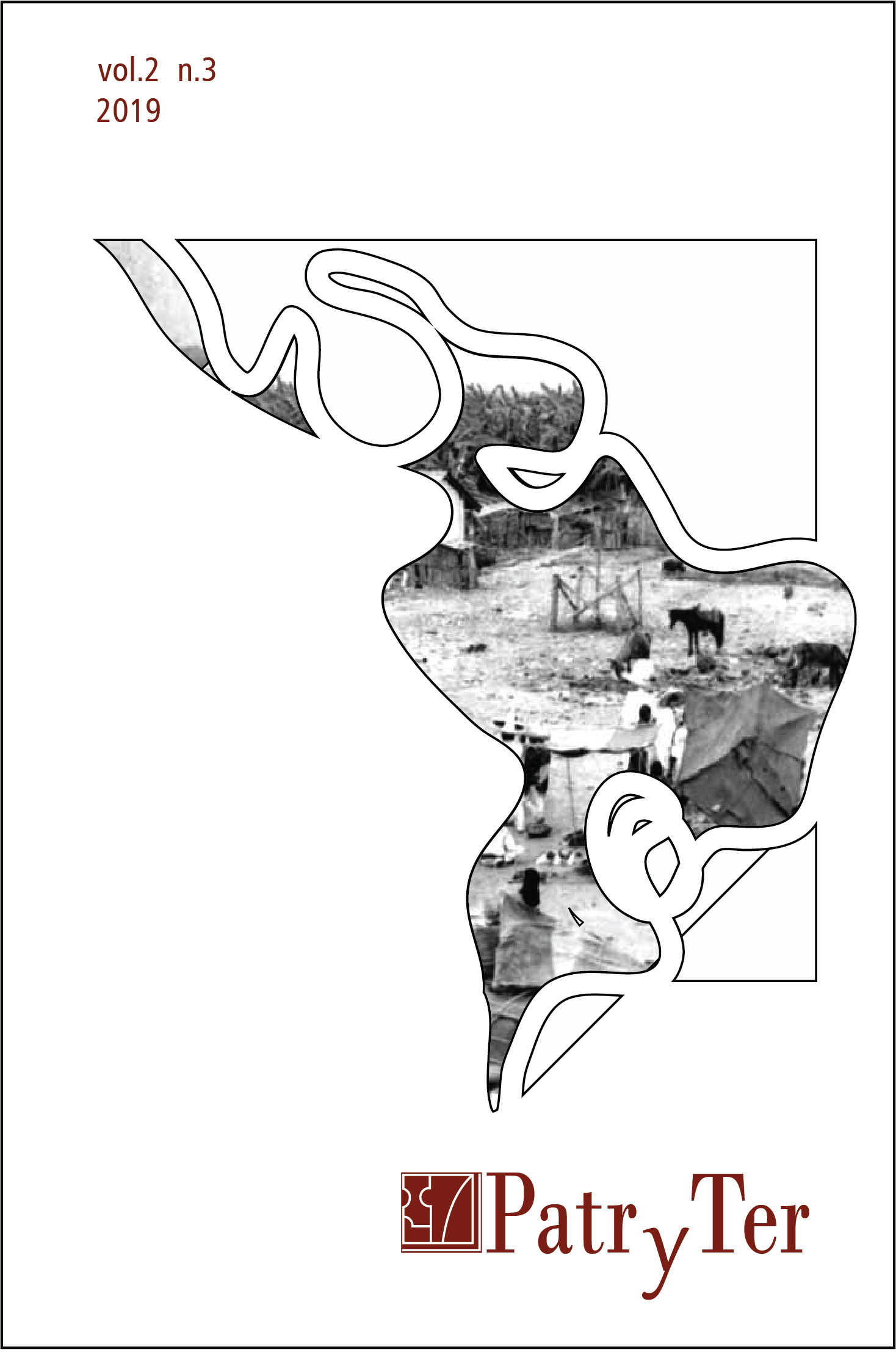Architecture in the historic centreof Mexico City
discourse analysis in the announcement for La Merced Conceptual Preliminary Contest, 2013
DOI:
https://doi.org/10.26512/patryter.v2i3.22721Keywords:
Discourse analysis. La Merced. Mexico City.Abstract
In this article, we examine the representations of the subjects involved in the urban intervention processes of the Historic Center of Mexico City, based on the analysis of the Call for Entries: La Merced Master Plan, of 2013. We emphasize that the tools of discourse analysis allow us to study the role played by the production of architectural objects in the reproduction of social structures; in particular, we are interested in the mechanisms of exclusion of social actors, the assignment of discursive roles and the construction of discursive subjects from abstract entities.
Downloads
References
Casalmiglia, H. y Tusón, A. (2002) Las cosas del decir. Manual de análisis del discurso. Barcelona: Editorial Ariel.
Consejo Consultivo para el Rescate de La Merced (2014) 100 Visiones por La Merced. Distrito Merced. México D.F.: Secretaría de Desarrollo Económico del Distrito Federal.
Distrito Merced (2016) Recuperado de: http://distritomerced.mx. Último acceso: 19 marzo 2018.
Eisenman, P. (1999) Diagram Diaries. New York: Universe Publishing.Fairclough, N. (1989) Language and power. New York: Longman.
Eisenman, P. (1995) Critical Discourse Analysis. The Critical Study of Languaje. London: Longman.
Franquesa, A. (2002) Breve reseña de la aplicación del análisis crítico del discurso a estructuras léxico-sintácticas. Onomázien, 7, 449-462.
García, W. (2016) A priori, A Posteriori: la memoria descriptiva como reflexión teórica en arquitectura. Apuntes, 29(1), 96-109.
Pallasmaa, J.(2002) Pensamiento, materia y experiencia. Una conversación con Steven Holl.El Croquis, 108 Steven Holl 1998-2002, 6-27
van Leeuwen, T. (1996 The Representation of Social Actors. En: Caldas, C. y Coulthard, M. Texts and Practices: Readings in Critical Discourse Analysis, 32”“70, London: Routledge.
Lobato, J. (2010) Idea, diagrama y argumento del proyecto arquitectónico en losconcursos de arquitectura. Biblioteca Vasconcelos en la Cd. de México (2003-2010). México D.F.: Universidad Nacional Autónoma de México, Tesis para obtener el título de Doctor en Arquitectura.
Moya, A. y Albentosa, J. (2001). Objetividad y abstracción en el discurso científico. Palmer, J., Posteguillo, S., Fortanet, I. (eds.) Discourse analysis and terminology in languages for specific purposes. Valencia: Universitat Jaume I, 379-387.
Muñoz, A. (2008) El proyecto de arquitectura. Concepto, proceso y representación. Barcelona:Editorial Reverté S.A.
Pardo, N. (2005) Representación de los actores armados en conflicto en la prensa colombiana. Forma y Función18, 167-196.Rescate Integral La Merced (2013) Recuperado de: http://www.rescateintegraldelamerced.com.mx/.Último acceso: 4 febrero 2018.
Sarfatti, M. (1994). Architectural Competitions as Discursive Events. Theory and Society, 23(4), 469-504.
Stecher, A. (2009). El análisis crítico del discurso como herramienta de investigación psicosocial del mundo del trabajo. Discusiones desde América Latina. Universitas Psychologica, 9(1), 93-107.
Thoenes, C. y Evers, B. (2003). Teoría de la arquitectura: del Renacimiento a la actualidad. Köln: Taschen.Tostrup, E. (1996).Architecture and Rhetoric. Text and Design in Architectural Competitions, Oslo 1939-90. Oslo: Oslo School of Architecture
Downloads
Published
How to Cite
Issue
Section
License
Copyright (c) 2019 PatryTer

This work is licensed under a Creative Commons Attribution-NonCommercial-NoDerivatives 4.0 International License.
Please be advised that Revista Patryter is licensed under a Creative Commons Attribution-NonCommercial-NoDerivatives 4.0 International License (CC BY-NC-ND 4.0) https://creativecommons.org/licenses/by-nc-nd/4.0/deed.en
Authors who publish in the PatryTer Magazine agree to the following terms:
- Authors retain the copyright and grant the journal the right of first publication, the work being simultaneously licensed under the Creative Commons Attribution-NonCommercial-NoDerivatives 4.0 International License (CC BY-NC-ND 4.0) which allows the sharing of the work with recognition of the authorship of the work and initial publication in this journal.
- The contribution is original and unpublished and is not being evaluated for publication by another journal. When submitting the article, authors should attach as a supplementary document a Letter addressed to the PatryTer's Editor, indicating the academic merits of the submitted work (relevance, originality and origin of the article, that is, from what type of research]. This letter must be signed by all authors.
- The authors authorize PatryTer Journal to publish the article in public and private databases, in Brazil and abroad.
- Authors declare that they are fully responsible for the entire contents of the contribution that they submit to the Editorial Board of PatryTer Magazine.
- Authors declare that there is no conflict of interest that could interfere in the impartiality of the scientific papers submitted to the PatryTer Magazine Editorial Board.
- Authors are authorized to take additional contracts separately, for non-exclusive distribution of the version of the work published in this journal (eg publish in institutional repository or as a book chapter), with acknowledgment of authorship and initial publication in this journal.
Authors are allowed and encouraged to publish and distribute their work online (eg in institutional repositories or on their personal page) at any point before or during the editorial process, as this can generate productive changes as well as increase the impact and the citation of the published work (See The Effect of Free Access).



